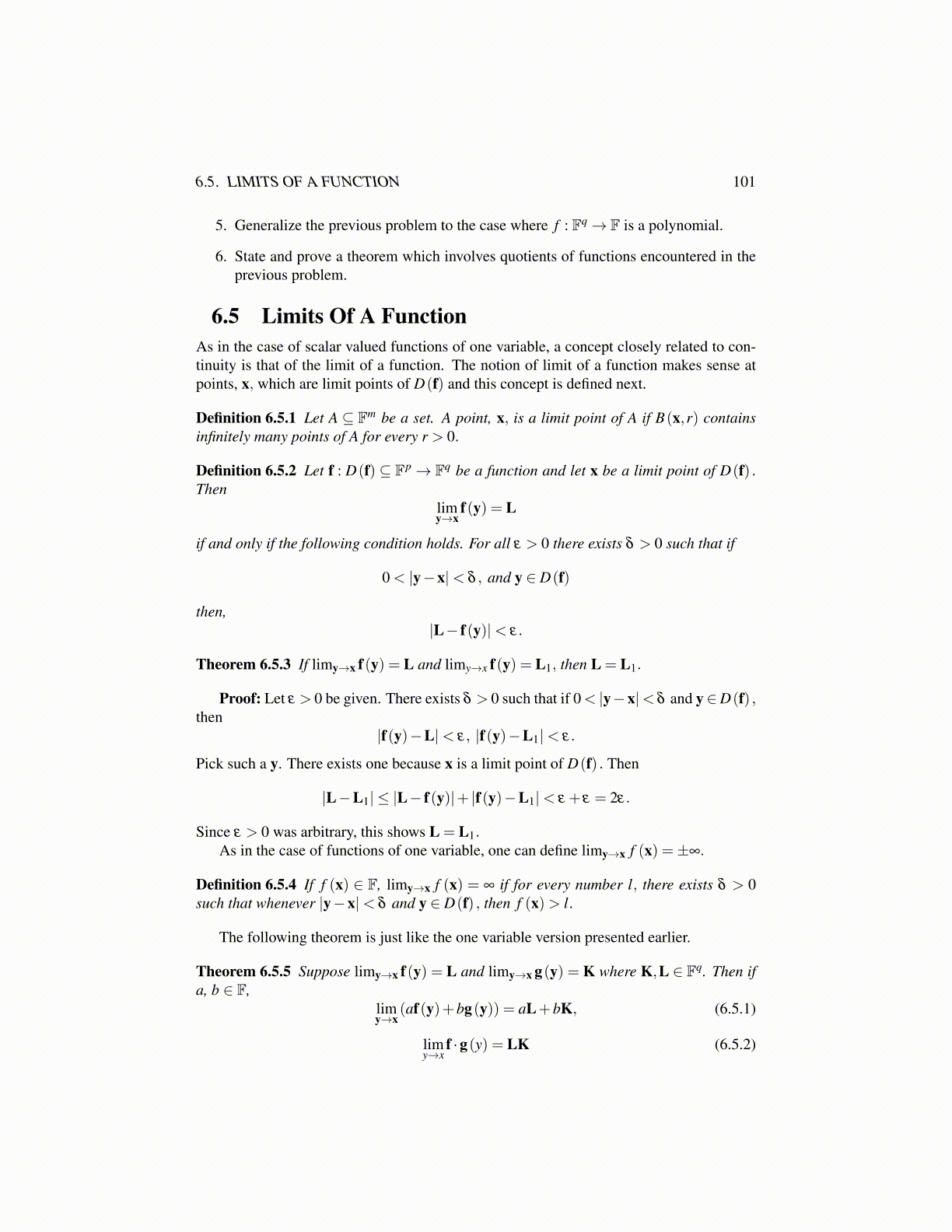
6.5. LIMITS OF A FUNCTION 101
5. Generalize the previous problem to the case where f : Fq→ F is a polynomial.
6. State and prove a theorem which involves quotients of functions encountered in theprevious problem.
6.5 Limits Of A FunctionAs in the case of scalar valued functions of one variable, a concept closely related to con-tinuity is that of the limit of a function. The notion of limit of a function makes sense atpoints, x, which are limit points of D(f) and this concept is defined next.
Definition 6.5.1 Let A ⊆ Fm be a set. A point, x, is a limit point of A if B(x,r) containsinfinitely many points of A for every r > 0.
Definition 6.5.2 Let f : D(f) ⊆ Fp→ Fq be a function and let x be a limit point of D(f) .Then
limy→x
f(y) = L
if and only if the following condition holds. For all ε > 0 there exists δ > 0 such that if
0 < |y−x|< δ , and y ∈ D(f)
then,|L− f(y)|< ε.
Theorem 6.5.3 If limy→x f(y) = L and limy→x f(y) = L1, then L = L1.
Proof: Let ε > 0 be given. There exists δ > 0 such that if 0 < |y−x|< δ and y∈D(f) ,then
|f(y)−L|< ε, |f(y)−L1|< ε.
Pick such a y. There exists one because x is a limit point of D(f) . Then
|L−L1| ≤ |L− f(y)|+ |f(y)−L1|< ε + ε = 2ε.
Since ε > 0 was arbitrary, this shows L = L1.As in the case of functions of one variable, one can define limy→x f (x) =±∞.
Definition 6.5.4 If f (x) ∈ F, limy→x f (x) = ∞ if for every number l, there exists δ > 0such that whenever |y−x|< δ and y ∈ D(f) , then f (x)> l.
The following theorem is just like the one variable version presented earlier.
Theorem 6.5.5 Suppose limy→x f(y) = L and limy→x g(y) = K where K,L ∈ Fq. Then ifa, b ∈ F,
limy→x
(af(y)+bg(y)) = aL+bK, (6.5.1)
limy→x
f ·g(y) = LK (6.5.2)